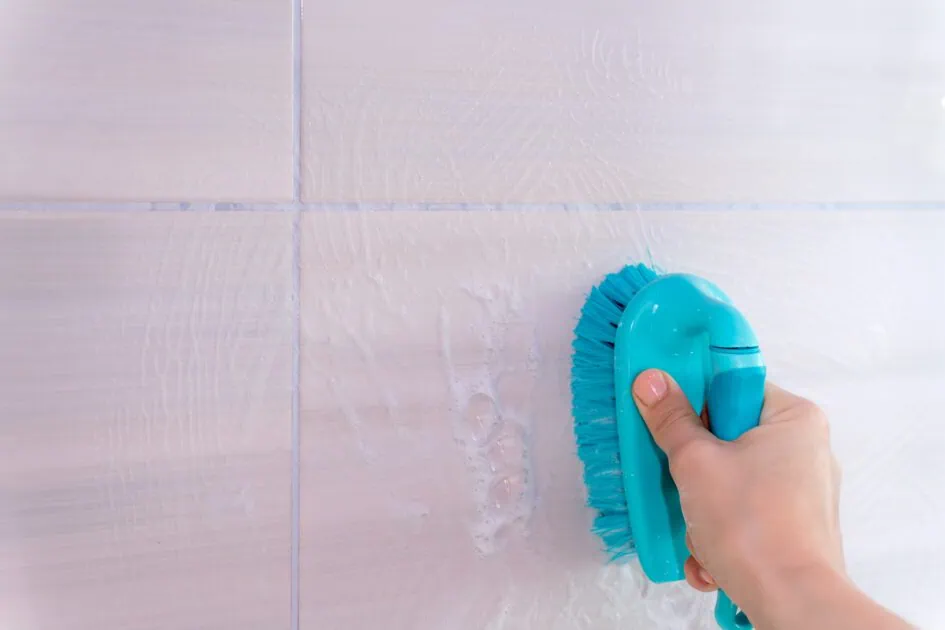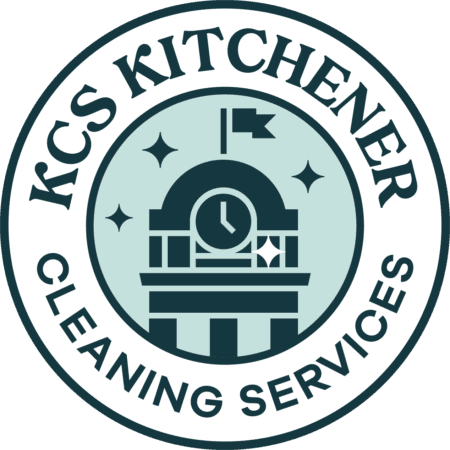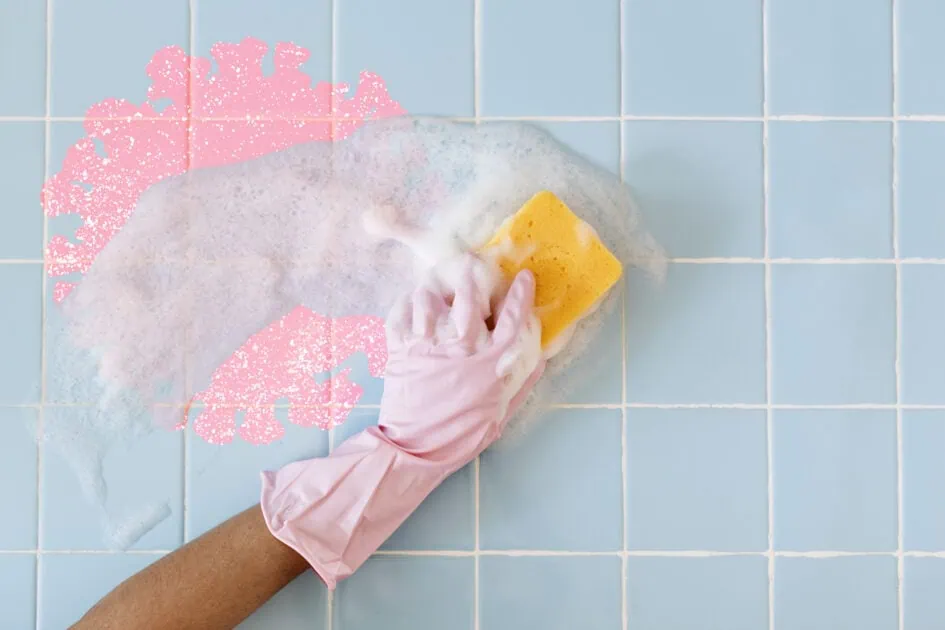You clean your shower tiles every week. They still look grimy. Or maybe you barely clean them. That brown spot in the corner? It could be mould. It could be soap scum.
Most cleaning advice is useless. Generic schedules ignore your actual life. A family of five sharing one bathroom is nothing like a single person with a guest shower. Hard water changes everything.
This guide gives you the real schedule based on your household size, water quality, and lifestyle. Plus warning signs your tiles need attention now.
Disclaimer: Cleaning products change. Tile specifications change. Climate matters. This reflects 2025 data and general advice. Always check if products work with your specific tiles.
Professional cleaners across Kitchener-Waterloo report that Ontario’s climate creates bathroom problems that national advice completely misses. Humidity swings from summer moisture to winter condensation affect how often you need to scrub. While this guide focuses on shower tile frequency, understanding bathroom cleaning essentials for fresh and hygienic spaces helps you maintain your entire bathroom efficiently.
Ready to stop guessing? Let’s go.
Why Cleaning Frequency Actually Matters
Dirty shower tiles aren’t just ugly. They’re expensive and might be making you sick.
Health and Money at Stake
Bacteria love moisture. Your shower provides perfect conditions constantly. Skip cleaning for a while? Bacterial colonies expand everywhere. Staphylococcus. Pseudomonas. The nasty stuff.
Mould spores trigger respiratory problems. Aspergillus and Cladosporium are common types of mould found in bathrooms. People with asthma or allergies suffer. Ontario summers make this worse. Humidity sits at 70-80% for weeks. Moisture doesn’t evaporate. Perfect conditions for mould.
Skip cleaning for three months or more? Your grout starts deteriorating. Professional grout replacement costs serious money. Standard-sized showers need complete regrouting that adds up fast.
Bathroom restoration in the Kitchener-Waterloo area varies widely based on damage severity. Minor tile restoration costs significantly less than severely neglected bathrooms needing full mould removal and grout replacement. Compare that to the minimal annual cost of regular cleaning supplies.
Over-Cleaning Wastes Money Too
Here’s what nobody mentions: cleaning too often wastes time and money.
Daily scrubbing with harsh cleaners wears down your grout. Acidic products? Chlorine-based stuff? They destroy protective sealants faster than leaving things alone would. People ruin perfectly good grout in two years of aggressive daily cleaning.
You’re spending 15 minutes daily on something needing weekly attention. That’s over 7 hours monthly. About 84 hours yearly you could spend on anything else.
What Determines Your Cleaning Schedule
Generic advice tells everyone to clean weekly. Useless. Your schedule depends on your situation.
Household Size and Usage
Live alone with one daily shower? Stretch cleaning for 10-14 days between scrubs. Four people showering daily? That’s 28 showers weekly. You need weekly cleaning at minimum.
Every shower dumps body oils on tiles. Shampoo residue with silicones. Soap film. It builds up quicker than you think.
Guest bathrooms need different schedules. Nobody uses that shower except when in-laws visit twice yearly? Quarterly cleaning works fine.
Water Quality
Hard water changes everything. Water with elevated minerals above 120 mg/L creates different problems. Kitchener-Waterloo, Cambridge, and Guelph regions? Between 150-300 mg/L in water supplies. You’ll see white crusty deposits within days.
Test your water with simple strips from hardware stores. They show mineral levels right away.
Hard water? Expect to clean more often. Those mineral deposits bond to tiles. They become harder to remove the longer they sit.
Tile and Grout Materials
Porcelain tiles resist staining better. Less porous. Glazed tiles have a protective layer, making them easier to clean.
Natural stones like marble, granite, and travertine require gentler cleaning. pH-neutral solutions only. Acidic cleaners damage stone permanently.
Unglazed tiles absorb moisture and stains faster. They need more aggressive schedules. Epoxy grout resists staining way better than cement-based alternatives.
Climate and Seasons
Ontario’s seasonal humidity swings affect your bathroom year-round. Summer brings moisture, encouraging mould. Tiles stay damp longer. Increase cleaning frequency from June through September.
Winter creates different problems. Cold walls meet warm shower air, creating condensation everywhere. Basement bathrooms stay cooler. Moisture lingers even longer.
Daily Habits Preventing Major Scrubbing
Daily prevention beats weekly scrubbing every time. Two minutes after each shower saves about 30-45 minutes of intensive scrubbing weekly.
Two-Minute Post-Shower Routine
Grab your squeegee before stepping out. Start at the top. Pull downward in overlapping straight lines. Angle at 45 degrees. It takes about 45 seconds. This removes about 75% of standing water.
Wipe fixtures quickly. A hand towel works. Get the faucet, shower head, and any ledges. Another 30 seconds.
Turn on the exhaust fan as you finish showering. Leave it running for 15-20 minutes after. It extracts 80-90% of humidity. Set a phone timer to remind you to turn it off.
Ventilation That Works
Open the bathroom door when possible. Crack the window during a shower if temps allow. Even in winter, a small opening makes a difference. Proper bathroom ventilation and mold prevention strategies work together to eliminate the moisture that causes tile grime and grout deterioration.
Target humidity below 50% after showering. Aim for 30-40% for the best prevention. Grab an inexpensive hygrometer to monitor levels. When humidity stays above 60% for 4-6 hours daily, you have perfect mould conditions.
Products to Keep in Shower
Less is more. Every bottle creates a spot where water pools underneath.
Keep the squeegee hanging in the shower. The most important tool you’ll own.
Consider solid soap and shampoo bars. They don’t leave the same residue as liquid products. People who switched notice cleaner tiles within weeks.
Weekly Scrubbing for Most Households
Weekly cleaning works for most people. Not daily. Not monthly. Weekly hits the sweet spot.

15-Minute Weekly Routine
Apply the cleaning solution generously. Allow 3-4 minutes dwell time. This lets chemicals break down soap scum and oils. It reduces scrubbing effort by 60-70%. Rushing without letting the solution work means you’ll scrub harder for worse results.
While the cleaner sits, wipe the fixtures and the shower door. Start from the top. Work down. Use a non-abrasive sponge. Scrub in small circles on stubborn spots.
Rinse thoroughly. Leftover solution attracts dirt faster. Squeegee everything dry. Takes 2 minutes. Prevents water spots.
Total time: 12-18 minutes, depending on shower size.
When to Adjust Frequency
High-traffic bathrooms serving four or more daily users need twice-weekly cleaning. Every 3-4 days. Soap scum returns by day 4 or 5.
Areas with hard water may require more attention. Seeing mineral deposits by midweek? Bump to twice-weekly or switch to a hard water cleaner.
Teenagers create 40-50% more product residue than adults. Teens in the house? Expect to clean more often.
Eco-Friendly Solutions
White vinegar works well. Mix equal parts white vinegar and water in a spray bottle. Allow 5 minutes of contact time before scrubbing.
For tougher jobs, make a paste with baking soda and water. Apply to problem areas. Scrub gently.
Add 10 drops of tea tree oil per cup of vinegar mixture. It provides natural antifungal properties.
Grout Needs Extra Attention
Use a smaller brush for grout lines. An old toothbrush works. Apply the cleaning solution directly. Extend dwell time to 5-7 minutes. Scrub along grout lines, not across them.
Look for early problems. Crumbling grout. Dark spots that won’t clean. Areas that stay damp for a long time after a shower.
Monthly Deep Cleaning
Monthly deep cleaning addresses what weekly cleaning misses. It takes longer but prevents problems costing serious money.
What Deep Clean Means
Address every grout line carefully. Get into corners where walls meet. Clean the bottom row where water pools most. Pull out removable caddies or organizers. Clean underneath and behind them.
Plan 45-60 minutes for standard showers. 75-90 minutes for large walk-ins or tub combos.
Tools That Help
Non-abrasive microfiber scrubbers work better than rough pads. They remove grime without scratching.
Consider a cordless handheld power scrubber. These battery tools reduce physical effort. They’re helpful for mobility issues or large showers.
A grout brush with stiff bristles gets into narrow lines. Inexpensive and lasts for years.
Quarterly and Seasonal Tasks
Grout Sealing
Grout sealing needs reapplication every 12-18 months. High-traffic showers with four or more daily users may require resealing at 10 to 12 months.
Test seal effectiveness with the water droplet test. Place drops on grout. Observe for 5-10 minutes. Water beads up? Sealant works. Water absorbs? Time to reseal.
Sealing takes about an hour. Sealant needs to cure for 24-48 hours before using the shower.
Seasonal Adjustments
Spring brings moisture challenges in April-May. Check for dampness lingering longer than usual.
Summer mould prevention becomes necessary from June to September. Consider running a small dehumidifier in windowless bathrooms. Some people increase their cleaning to twice a week.
Check caulking and grout before winter. Address cracks or gaps in October before the heating season begins.
Winter condensation appears when warm surfaces meet cold surfaces. Basement bathrooms suffer the most. Keep doors open after showers.
Quarterly Inspection
Inspect tiles for hairline cracks wider than 0.5mm. These let water infiltrate behind tiles.
Test grout integrity with gentle finger pressure. Properly cured grout feels firm. Deteriorating grout feels soft or crumbly.
Inspect caulking around the tub or shower pan. It should remain flexible and intact. Replace when you notice deterioration.
Look for discoloured grout, tiles sounding hollow when tapped, or persistent musty smells.
Warning Signs Needing Immediate Action
Visual Indicators That Can’t Wait
Discolouration patterns spreading across multiple tiles signal subsurface mould. Pink, black, or green staining. Not surface grime. Address immediately before spreading.
Persistent musty odours remaining after thorough cleaning indicate hidden mould colonies growing in wall cavities, behind tiles, or within grout.
Visible mould expanding despite weekly cleaning indicates something is wrong. Change your approach now.
Grout that crumbles or falls out creates pathways for water damage. Fix deteriorating grout as soon as you notice it.
When the Schedule Doesn’t Work
Soap scum reforming within 2-3 days after cleaning suggests problems. Either hard water requires specialized cleaners, or incomplete rinsing leaves residue.
Stains reappearing quickly in the same spots indicate grout deterioration or water seeping from behind tiles.
Moisture that never fully dries points to ventilation problems or water intrusion.
Common Cleaning Mistakes
Products That Damage
Acidic cleaners chemically etch natural stone tiles. Vinegar works great on porcelain and ceramic. It eats away at marble and travertine. Always check tile type.
Bleach degrades cement-based grout over repeated applications. Use sparingly if at all.
Abrasive scouring pads create microscopic scratches that collect more dirt. Tiles look worse after a few months of aggressive scrubbing.
Timing Errors
Cleaning immediately after a hot shower proves useless. Elevated temperatures cause solutions to evaporate rapidly. Wait 15-20 minutes, allowing the surfaces to cool.
Most cleaners require 3-5 minutes of contact time. Rushing this reaction necessitates two to three times more physical scrubbing.
Over-Cleaning Problems
Daily scrubbing with harsh chemicals accelerates grout degradation three to five times faster than moderate neglect. Grout becomes more porous and stains more easily.
Excessive chemical use costs money and provides no additional benefit. Once tiles are clean, they’re clean.
Adjusting for Different Life Situations
Busy Professionals
Minimum maintenance consists of daily 45-second squeegeeing combined with weekly 15-minute scrubbing. This baseline prevents grout deterioration while requiring only 20 minutes total weekly.
Leave cleaning supplies in the shower. Apply the solution after a morning shower. Let it sit all day. Scrub during evening shower. Extended contact dissolves deposits with minimal effort.
Professional help might justify the cost when your time is worth more than cleaning services charge.
Large Families
Increase cleaning to twice-weekly. Every 3-4 days. Delegate tasks to capable family members. Teenagers can handle weekly scrubbing. Younger kids can squeegee after showers.
Accept realistic expectations. High-traffic bathrooms show age faster. Grout might need resealing every 12 months instead of 18.
Rentals and Guest Bathrooms
Low-usage guest bathrooms accumulate buildup 75-85% slower. This extends cleaning intervals from weekly to monthly.
Secondary bathrooms that remain empty still require quarterly cleaning. This prevents dust, mineral deposits, and musty odours. It requires only 20-30 minutes.
Aging Homeowners
Long-handled scrubbers with 36-48 inch telescoping handles reduce bending and reaching. Sit on a shower stool if standing becomes difficult.
If cleaning creates safety hazards, professional services provide independence. Many services around Kitchener-Waterloo offer senior discounts, making regular professional cleaning more affordable.
Professional Cleaning vs DIY
When Professionals Make Sense
Professional cleaners complete tasks that typically require homeowners 90 minutes in about 45 minutes. They use commercial power scrubbers and professional solutions, along with organized techniques, delivering 50% time savings with better results.
Severely neglected tiles often need professional attention. DIY methods might not penetrate years of buildup.
What Services Include
Full deep cleaning includes every tile surface. Individual grout line scrubbing. Complete fixture descaling. Shower door track cleaning. Ceiling and wall corner mould treatment.
Many local services use eco-friendly products safe for homes with children and pets. Satisfaction guarantees protect your investment.
Choosing Qualified Professionals
Verify companies maintain adequate liability insurance coverage. Check online reviews across multiple platforms.
Local family-owned services often provide more personalized attention. Companies like KCS Kitchener Cleaning Services offer trained cleaners using eco-friendly products and power equipment. Their 100% satisfaction guarantee and online booking address common concerns.
Many services offer senior discounts for clients aged 65 and up, making regular professional cleaning more accessible.
Taking Control of Maintenance
You now have a framework instead of guessing. Daily post-shower squeegeeing requires just 45 seconds and removes 75% of moisture that promotes mould growth.
Weekly scrubbing with proper 3-4 minute dwell time maintains clean tiles in 15-18 minutes. Monthly deep cleaning addresses accumulated buildup in 45-90 minutes. Quarterly inspections catch problems early.
Start by assessing household variables this week. How many people use the shower daily? What’s your water quality? What tile type? These determine a personalized schedule.
Set phone reminders for weekly cleaning. Add monthly deep cleaning to the calendar. Gather basic supplies.
Establish consistent weekly habits first. Achieve 4-6 consecutive weeks of reliable cleaning sessions. Then layer in additional monthly tasks. This prevents overwhelming complexity.
Dealing with persistent problems despite regular cleaning? KCS Kitchener Cleaning Services offers professional cleaning services in Cambridge, Ontario with skilled professionals who understand proper cleaning methods and eco-friendly solutions for heavily soiled bathrooms. One professional service establishes a clean baseline. Your maintenance schedule keeps things manageable from there.
Your shower tiles can stay clean without consuming weekends. You have clarity now on frequency matching your situation. Stop following generic advice and instead focus on your actual household.


